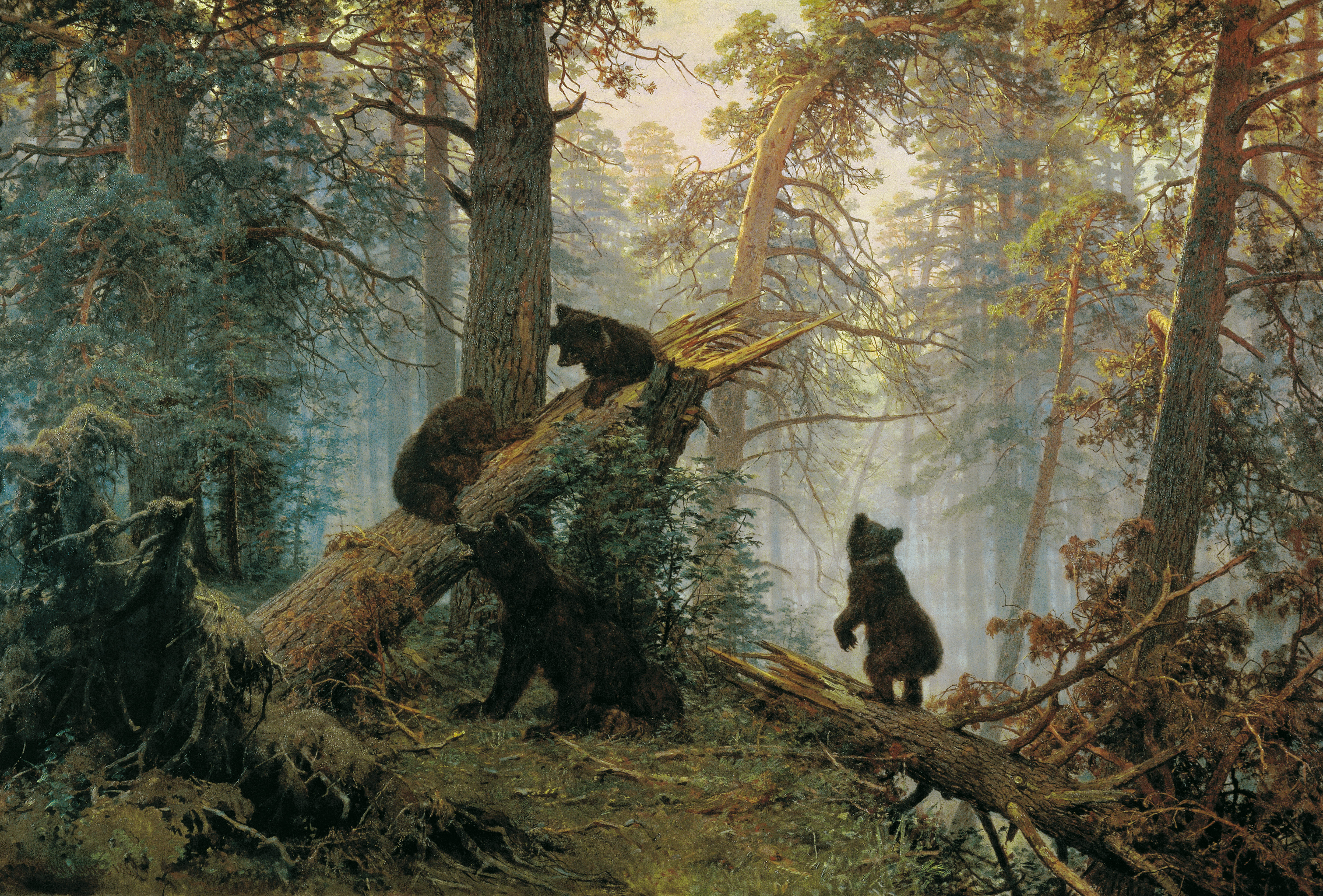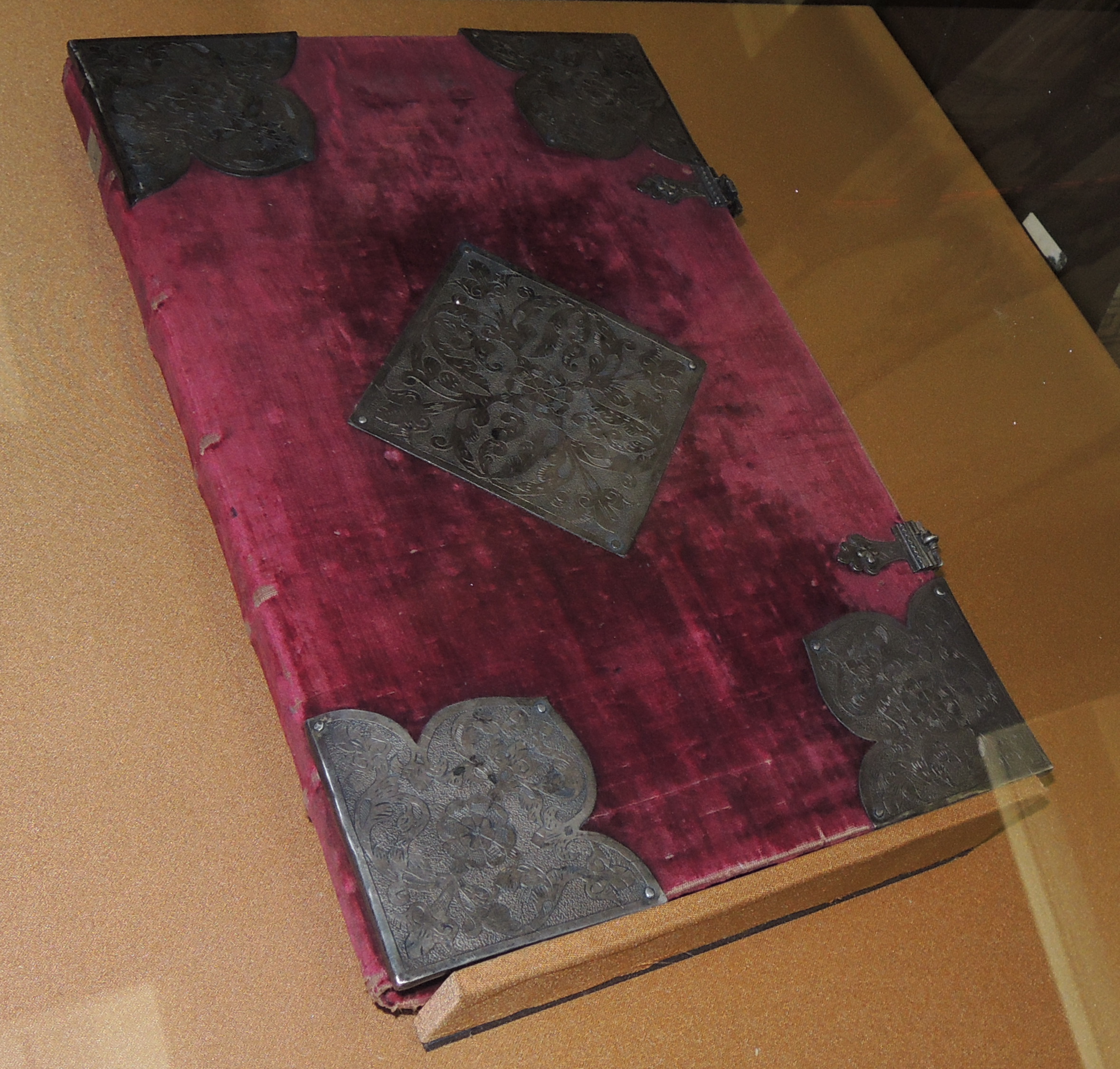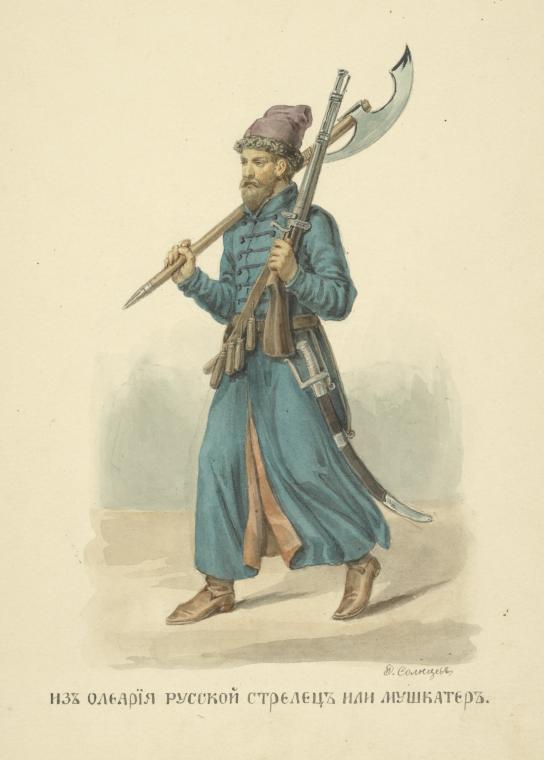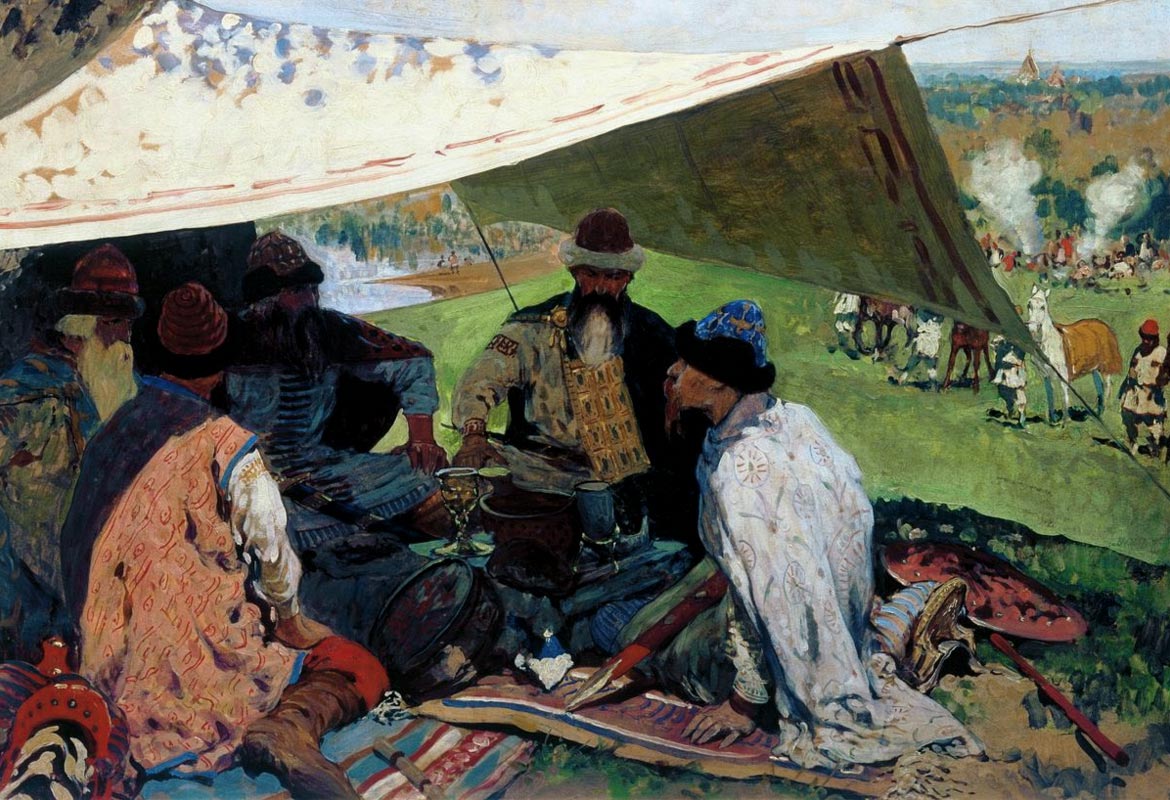|
Sergei Ivanov (painter)
Sergey Vasilyevich Ivanov (; – ) was a Russian genre and history painter, known for his social realism. Biography His father was a tax collector for the Customs Service.Brief biography @ RusArtNet. He displayed an early talent for art, but his father was opposed on the grounds that it would not be a secure way to make a living so, at the age of eleven, he was enrolled at the .Biography and appreciation @ ArtLib.ru The Institute was not to his liking and he was an indifferent student, so a family friend who was an amateur artist encouraged his father to send him to the |
Ruza, Ruzsky District, Moscow Oblast
Ruza () is a types of inhabited localities in Russia, town and the administrative center of Ruzsky District in Moscow Oblast, Russia, located on the Ruza River (a tributary of the Moskva River) west of Moscow. Population: History It was first mentioned in 1339, as a part of the Principality of Zvenigorod. It became a part of the Grand Duchy of Moscow in the early 16th century. The town was a fortress which protected Moscow from the west. During World War II, Ruza was occupied by the Germans from October 25, 1941, to January 17, 1942. Administrative and municipal status Within the subdivisions of Russia#Administrative divisions, framework of administrative divisions, Ruza serves as the administrative center of Ruzsky District.Resolution #123-PG As an administrative division, it is incorporated within Ruzsky District as the Town of district significance, Town of Ruza. As a subdivisions of Russia#Municipal divisions, municipal division, the Town of Ruza is incorporated within Ru ... [...More Info...] [...Related Items...] OR: [Wikipedia] [Google] [Baidu] |
Peredvizhniki
Peredvizhniki (, ), often called The Wanderers or The Itinerants in English, were a group of Russian realism (arts), realist artists who formed an artists' cooperative in protest of academic restrictions; it evolved into the ''Society for Travelling Art Exhibitions'', in short ''Peredvizhniks'', in 1870. History In 1863 a group of fourteen students decided to leave the Imperial Academy of Arts in Saint Petersburg. The students found the rules of the Academy constraining; the teachers were conservative and there was a strict separation between high and low art. In an effort to bring art to the people, the students formed an independent artistic society; The Petersburg Artel of Artists, Cooperative of Artists (Artel). In 1870, this organization was largely succeeded by the Association of Travelling Art Exhibits (Peredvizhniki) to give people from the provinces a chance to follow the achievements of Russian Art, and to teach people to appreciate art. The society maintained indep ... [...More Info...] [...Related Items...] OR: [Wikipedia] [Google] [Baidu] |
1864 Births
Events January * January 13 – American songwriter Stephen Foster ("Oh! Susanna", "Old Folks at Home") dies aged 37 in New York City, leaving a scrap of paper reading "Dear friends and gentle hearts". His parlor song "Beautiful Dreamer" is published in March. * January 16 – Denmark rejects an Austrian-Prussian ultimatum to repeal the Danish Constitution, which says that Schleswig-Holstein is part of Denmark. * January 21 – New Zealand Wars: The Tauranga campaign begins. February * February – John Wisden publishes ''Wisden Cricketers' Almanack, The Cricketer's Almanack for the year 1864'' in England; it will go on to become the major annual cricket reference publication. * February 1 – Danish-Prussian War (Second Schleswig War): 57,000 Austrian and Prussian troops cross the Eider River into Denmark. * February 15 – Heineken N.V., Heineken Brewery is founded in the Netherlands. *American Civil War: ** February 17 – The tiny Confed ... [...More Info...] [...Related Items...] OR: [Wikipedia] [Google] [Baidu] |
Zemsky Sobor
The ''Zemsky Sobor'' ( rus, зе́мский собо́р, p=ˈzʲemskʲɪj sɐˈbor, t=assembly of the land) was a parliament of the Tsardom of Russia's estates of the realm active during the 16th and 17th centuries. The assembly represented Russia's feudal classes in three categories: Russian nobility, Nobility and the high bureaucracy, the ''Synod#Orthodox, Holy Sobor'' of the Eastern Orthodox Church, Orthodox clergy, and representatives of "commoners" including merchants and townspeople. Assemblies could be summoned either by the tsar, the patriarch, or the boyar duma, to decide current agenda, controversial issues or enact major pieces of legislation. Tsardom of Russia In the 16th century, Tsar Ivan the Terrible held the first ''Zemsky Sobor'' in 1549, holding several assemblies primarily as a Rubber stamp (politics), rubber stamp but also to address initiatives taken by the lower nobility and townspeople. Times of Troubles The Time of Troubles saw the Zemsky Sobor e ... [...More Info...] [...Related Items...] OR: [Wikipedia] [Google] [Baidu] |
Tsardom Of Russia
The Tsardom of Russia, also known as the Tsardom of Moscow, was the centralized Russian state from the assumption of the title of tsar by Ivan the Terrible, Ivan IV in 1547 until the foundation of the Russian Empire by Peter the Great in 1721. From 1550 to 1700, Russia grew by an average of per year. The period includes the Time of Troubles, upheavals of the transition from the Rurik Dynasty, Rurik to the House of Romanov, Romanov dynasties, wars with the Polish–Lithuanian Commonwealth, Swedish Empire, Sweden, and the Ottoman Empire, and the Russian conquest of Siberia, to the reign of Peter the Great, who took power in 1689 and transformed the tsardom into an empire. During the Great Northern War, he implemented government reform of Peter I, substantial reforms and proclaimed the Russian Empire after Treaty of Nystad, victory over Sweden in 1721. Name While the oldest Endonym and exonym, endonyms of the Grand Principality of Moscow used in its documents were "Rus'" () and ... [...More Info...] [...Related Items...] OR: [Wikipedia] [Google] [Baidu] |
Streltsy
The streltsy (, ; , ) were the units of Russian firearm infantry from the 16th century to the early 18th century and also a social stratum, from which personnel for streltsy troops were traditionally recruited. They are also collectively known as ''streletskoye voysko'' (). These infantry troops reinforced feudal levy horsemen or ''Landed Army, pomestnoye voysko'' (). The first units were established by Ivan the Terrible as part of the first Russian standing army. The streltsy were under the administration of the ''Streletsky prikaz'' from 1571. Peter the Great curtailed the influence of the streltsy, and following the streltsy uprising of 1698, streltsy units began to be disbanded. However, it was not until the 1720s that this process was completed. Origins and organization The first streltsy units were created by Ivan the Terrible sometime between 1545 and 1550 and armed with Arquebus, arquebuses. During his reign, Russia was fighting wars almost continuously, including ... [...More Info...] [...Related Items...] OR: [Wikipedia] [Google] [Baidu] |
George's Day In Autumn
George's Day in Autumn, or Saint George's Day, is one of two feasts of Saint George, celebrated by the Russian Orthodox Church (26 November Julian Calendar, equivalent to 9 December Gregorian from 1900 to 2099), the Serbian Orthodox Church (3 November Julian Calendar, equivalent to 16 November Gregorian from 1900 to 2099), and the Georgian Orthodox Church (10 November Julian Calendar, equivalent to 23 November Gregorian from 1900 to 2099), the other being Saint George's Day of Spring (23 April Julian, equivalent to 6 May in the Gregorian calendar from 1900 to 2099). Yuri's Day in the Autumn, celebrated after the end of the agricultural year and the gathering of the harvest, had a special significance on the calendar of Russian peasants during the centuries when the system of Russian serfdom was becoming established. The '' Sudebnik'' of 1497 defined the two weeks' period around the Autumn Yuri's Day (one week before the feast and one week after it), as the only time of the ... [...More Info...] [...Related Items...] OR: [Wikipedia] [Google] [Baidu] |
Council Of Uvetichi
The Council of Uvetichi consisted of two meetings of the senior generation of princes of Kievan Rus'. It took place in August 1100, and it had a twofold purpose: to bring about a reconciliation among the princes and to pass judgment on Prince Davyd Igorevich. The venue of the conference was the town of Uvetichi, which is on the right bank of the Dnieper not far from Kiev. It is now the village of Vytachiv in the Kyiv Oblast. The Rus' Primary Chronicle ("The Tale of Bygone Years", the Povest' vremennykh let) is the primary source of information for the meetings, and the information is presented twice in the chronicle: first in detail under the year 1097, and then sequentially under the years 1098-1100. Background The council was preceded by severe conflict involving the Volhynian and Galician regions. It began in November 1097 when, violating the agreements reached at the earlier meeting of princes at the Council of Liubech, Volhynian Prince and Prince Svyatopolk II Izyaslavi ... [...More Info...] [...Related Items...] OR: [Wikipedia] [Google] [Baidu] |
Yakhroma River
The Yakhroma () is a right tributary of the Sestra that flows through a network of peat marshes in the north of Moscow Oblast, Russia. It passes through the towns of Dmitrov and Yakhroma, crossing the Moscow Canal on its way. The construction of the Moscow Canal has separated the upper course of the Yakhroma from its lower course. The lower course is long, and has a drainage basin A drainage basin is an area of land in which all flowing surface water converges to a single point, such as a river mouth, or flows into another body of water, such as a lake or ocean. A basin is separated from adjacent basins by a perimeter, ... of .«Река Яхрома (Большая Яхрома)» Russian State Water Registry Tributaries * Volgusha * Berezovetc * Kuholka * Dyatlinka * Lbo ...[...More Info...] [...Related Items...] OR: [Wikipedia] [Google] [Baidu] |
Dacha
A dacha (Belarusian, Ukrainian language, Ukrainian and rus, дача, p=ˈdatɕə, a=ru-dacha.ogg) is a seasonal or year-round second home, often located in the exurbs of former Soviet Union, post-Soviet countries, including Russia. A cottage (, ') or shack serving as a family's main or only home, or an outbuilding, is not considered a dacha, although some dachas recently have been converted to year-round residences and vice versa. The noun "dacha", coming from verb "davat" (''to give''), originally referred to land allotted by the tsar to his nobles; and indeed the dacha in Soviet times is similar to the Allotment (gardening), allotment in some Western countries – a piece of land allotted, normally free, to citizens by the local government for gardening or growing vegetables for personal consumption. With time the name for the land was applied to the building on it. In some cases, owners occupy their dachas for part of the year and rent them to urban residents as summer retrea ... [...More Info...] [...Related Items...] OR: [Wikipedia] [Google] [Baidu] |
Pushkin
Alexander Sergeyevich Pushkin () was a Russian poet, playwright, and novelist of the Romantic era.Basker, Michael. Pushkin and Romanticism. In Ferber, Michael, ed., ''A Companion to European Romanticism''. Oxford: Blackwell, 2005. He is considered by many to be the greatest Russian poet,Short biography from University of Virginia . Retrieved 24 November 2006.Allan Reid, "Russia's Greatest Poet/Scoundrel" Retrieved 2 September 2006. as well as the founder of modern Russian literature [...More Info...] [...Related Items...] OR: [Wikipedia] [Google] [Baidu] |
Lermontov
Mikhail Yuryevich Lermontov ( , ; rus, Михаи́л Ю́рьевич Ле́рмонтов, , mʲɪxɐˈil ˈjʉrʲjɪvʲɪtɕ ˈlʲerməntəf, links=yes; – ) was a Russian Romantic writer, poet and painter, sometimes called "the poet of the Caucasus", the most important Russian poet after Alexander Pushkin's death in 1837 and the greatest figure in Russian Romanticism. His influence on Russian literature is felt in modern times, through his poetry, but also his prose, which founded the tradition of the Russian psychological novel. Lermontov was born on October 15, 1814 in Moscow into the Lermontov family and grew up in Tarkhany. Lermontov's father, Yuri Petrovich, was a military officer who married Maria Mikhaylovna Arsenyeva, a young heiress from an aristocratic family. Their marriage was unhappy, Maria's health deteriorated, and she died of tuberculosis in 1817. A family dispute ensued over Lermontov's custody, resulting in his grandmother, Elizaveta Arsenyeva, raising ... [...More Info...] [...Related Items...] OR: [Wikipedia] [Google] [Baidu] |





.jpg)

